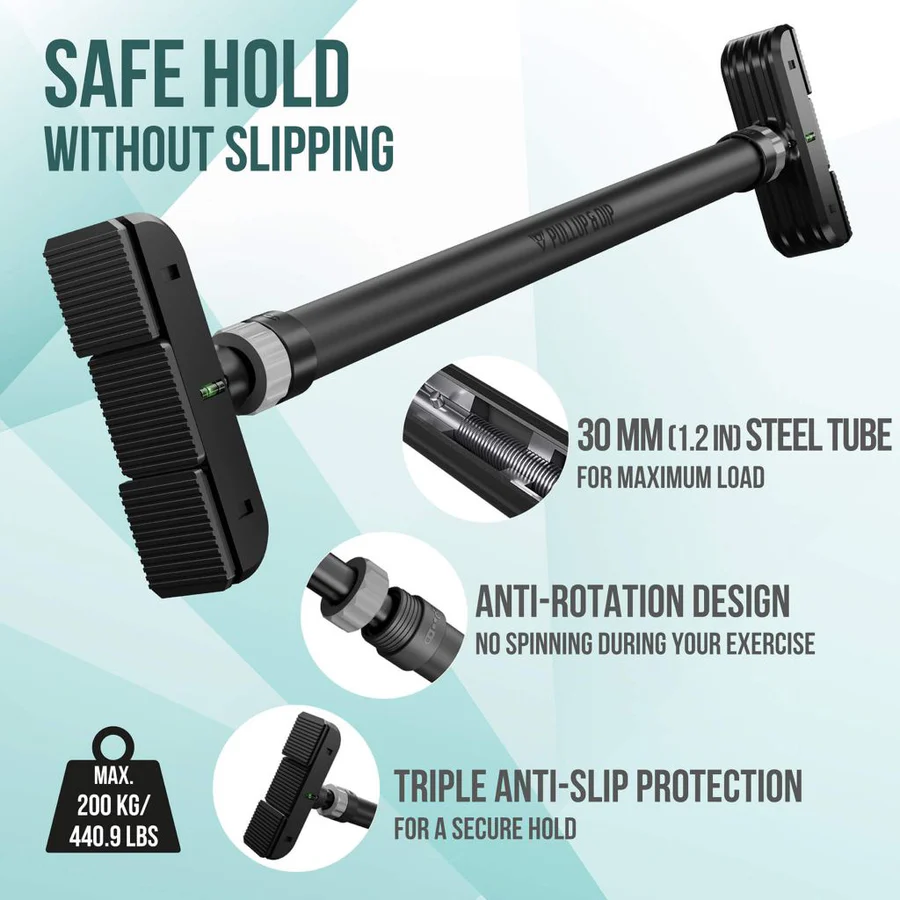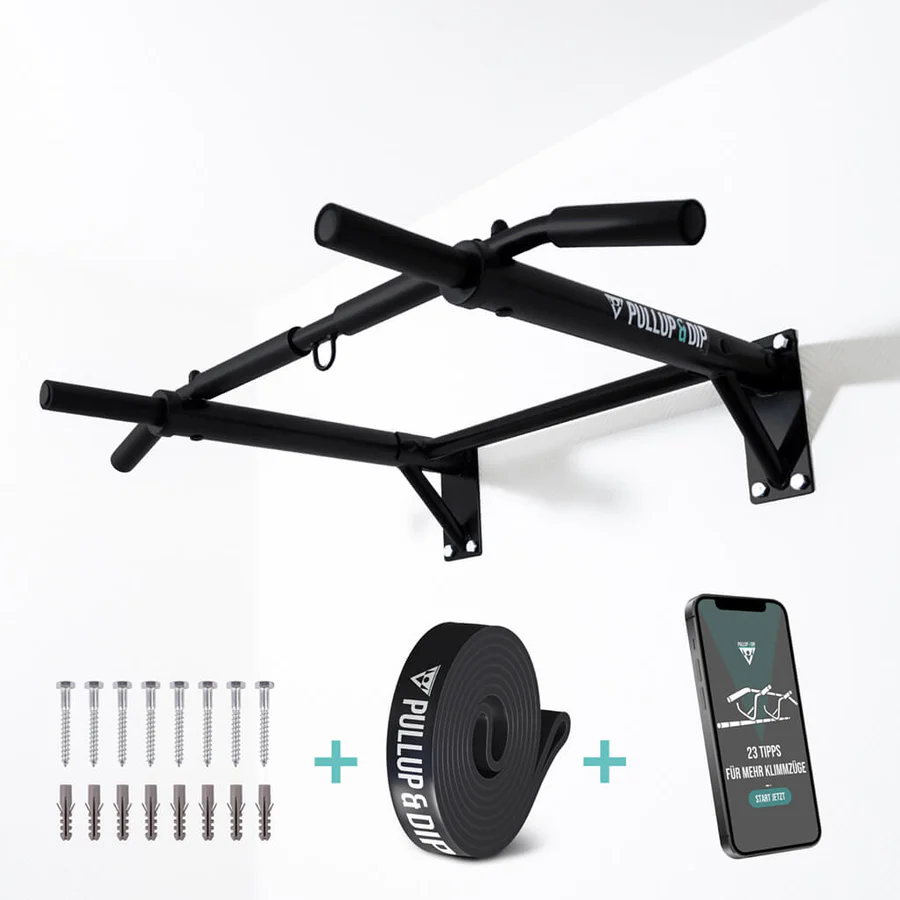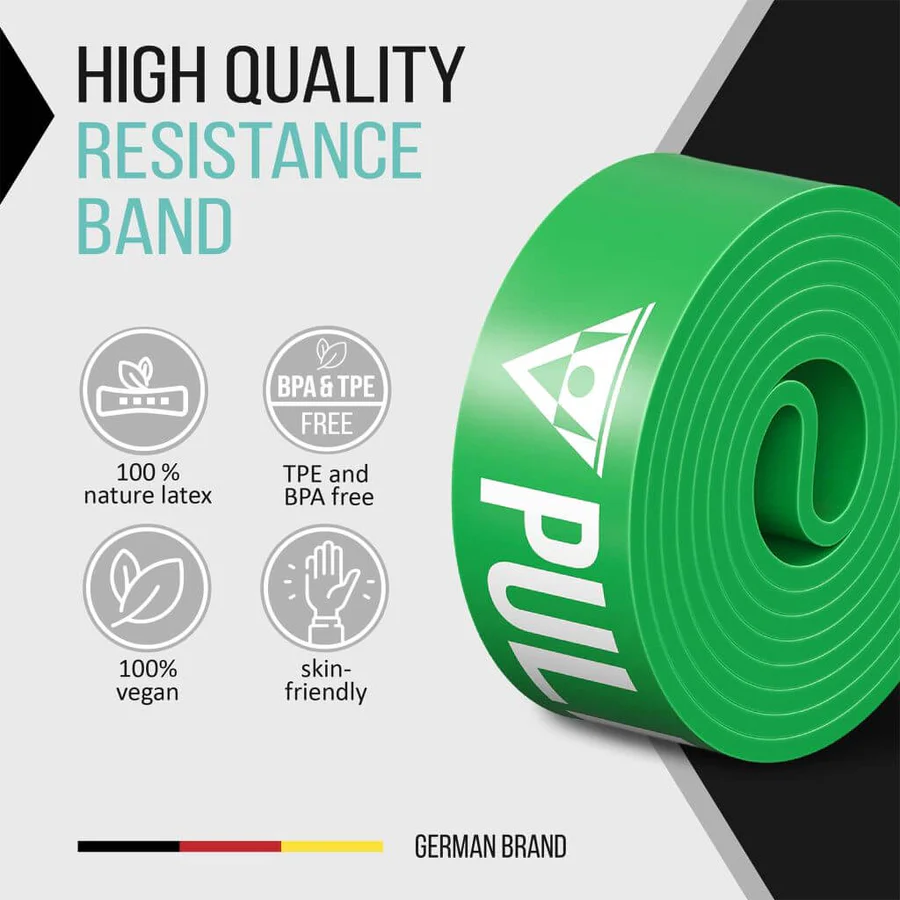Essential Calishenics Equipment For Home Workouts In 2025
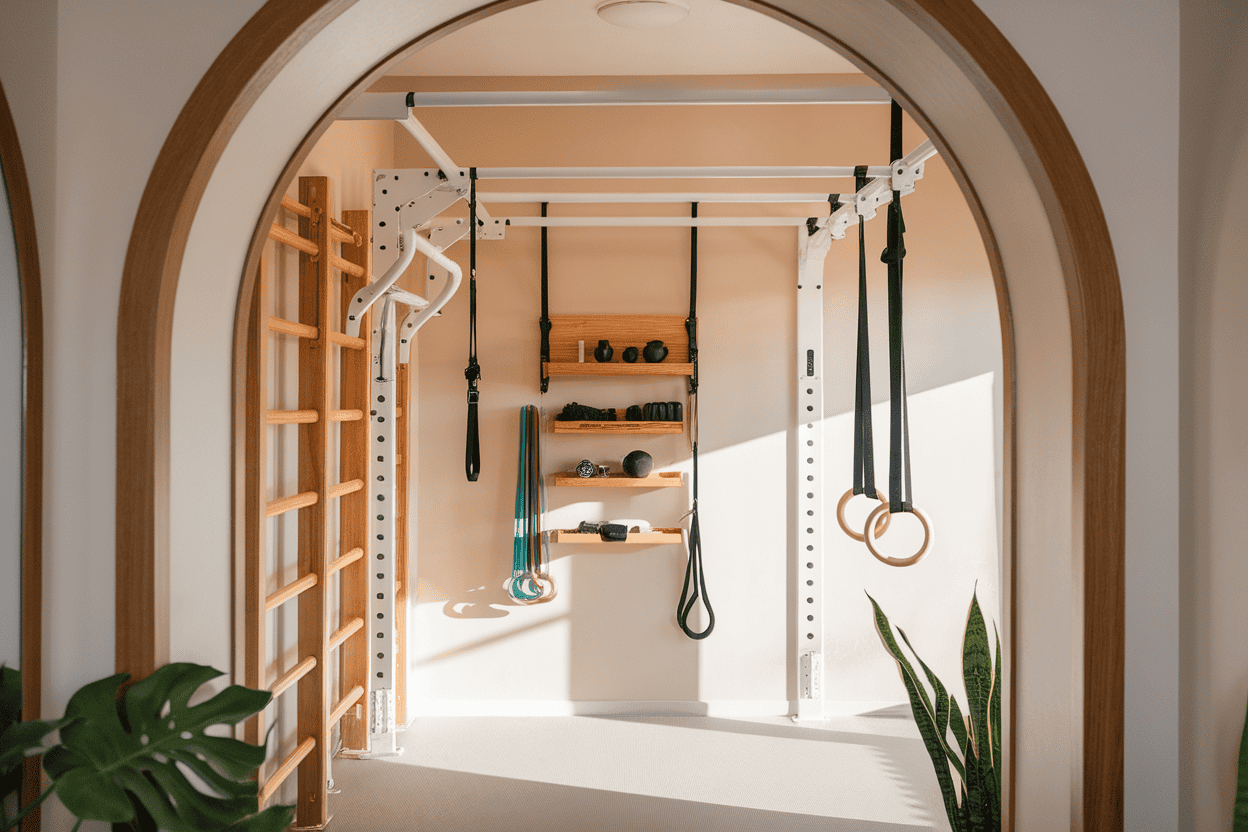
Discover the essential calisthenics equipment for home gyms in 2025. From pull-up bars to parallettes, learn what you need to build strength with minimal space and maximum results.
Disclosure: This page contains affiliate links. At no extra cost to you, we may earn a commission if you make a purchase. This helps keep our content free.
Let me share my journey with calisthenics equipment for home workouts, starting from improvising with tree branches on my family's farm to finally discovering the perfect minimalist setup for practical calisthenics training. Finding the best calisthenics equipment for home is important, but knowing where to start is hard.
Like many of you, I've experimented with all sorts of bodyweight exercise equipment over the years, and I've learned what truly matters for building functional strength. I tried to do it without any equipment, but I have to tell you that minimalism is very limiting. When doing calisthenics at home, you should think about what items would help you progress.
While this works for me, you must decide what fits your style best.
Let me walk you through the essential bodyweight training equipment that I've found works best after 15 years of trial and error:
1. Pull-Up Bar

Pull-up bars have been a cornerstone of my strength training journey. From those early days of using barn beams, I've learned the importance of investing in what you need for at-home workouts.
There are many options when it comes to pull-up bars. First, you must decide what works best for you and your space. If a doorway pull-up bar is all you can manage for your workouts, then go for it. You just need to get started.
Here is a list of the different types of pull-up bars.
I'll analyze the pros and cons of each type of pull-up bar to help you make an informed decision.
Pros
Cons
Starting out, you might want to go with a simple doorway pull-up bar. That is how I started my journey, and I think for me it was a great investment. No matter what happens, you'll always have easy, quick access to do pull-ups and other exercises.
Here is an awesome option from PULLUP&DIP that is on the sturdy side. It also has levels built into each side so you can keep that nice symmetry. Plus, they offer a 30-day money-back guarantee.
Click the button and check it out.
Pros
Cons
This wall-mounted pull-up bar from PULLUP&DIP is a great option if you are looking to make more of a permanent choice. This will be sturdy and work great with other equipment pieces. You will need a drill and a drill bit the right size to install this one.
Click and see if it's right for you!
Foldable Multifunction Pull Up Bar
Pros
Cons
Conclusion:
Of these three options, the wall-mounted pull-up bar offers the most stability and versatility for serious training, while the doorway option provides a good balance of convenience and functionality for casual users. The foldable/portable option is best for those who prioritize flexibility and storage but don't need maximum stability.
You need to find what works best for you. That will be a big part of your success in your fitness journey.
2. Paralletes
Parallettes bars changed my training game completely. These are great for dips, push ups, L-sits, and more!
They're essential for progressing toward advanced movements like the planche and are stored easily in any home gym setup.These are very simple pieces of equipment that provide you with an extended range of motion for extra gains while also giving you much more variety of exercises and difficulty.
Plus, there is a bonus, an ebook training guide to help you in your journey.
3. Rings With Straps
Speaking of functional fitness equipment, gymnastic rings with durable straps are possibly my most versatile training tool. Rings opened up a whole new world of bodyweight training. They're perfect for dips, rows, muscle-ups, and even front-lever training. They also give you a much more complex way to do push-ups!
Pro tip from my experience: wooden rings provide better grip than plastic, especially during those hot summer training sessions. Plastic sometimes feels easier on the hands.
Adjustable rings pair great with pull-up bars because you have another piece of equipment that gives you so many variations of exercise in the same area you are already working out in.
4. Resistance Bands
This is one of the most helpful tools you can have. They are extremely effective in helping you with your workouts. Pull-ups are one of the most common exercises you see people doing, but that's just the beginning. The number of things you can do with a set of resistance bands is crazy.
PULLUP&DIP offers a bundle of that range in resistance, along with a door anchor, travel bag, and an exercise guide to complement it.
5. Weighted Vest
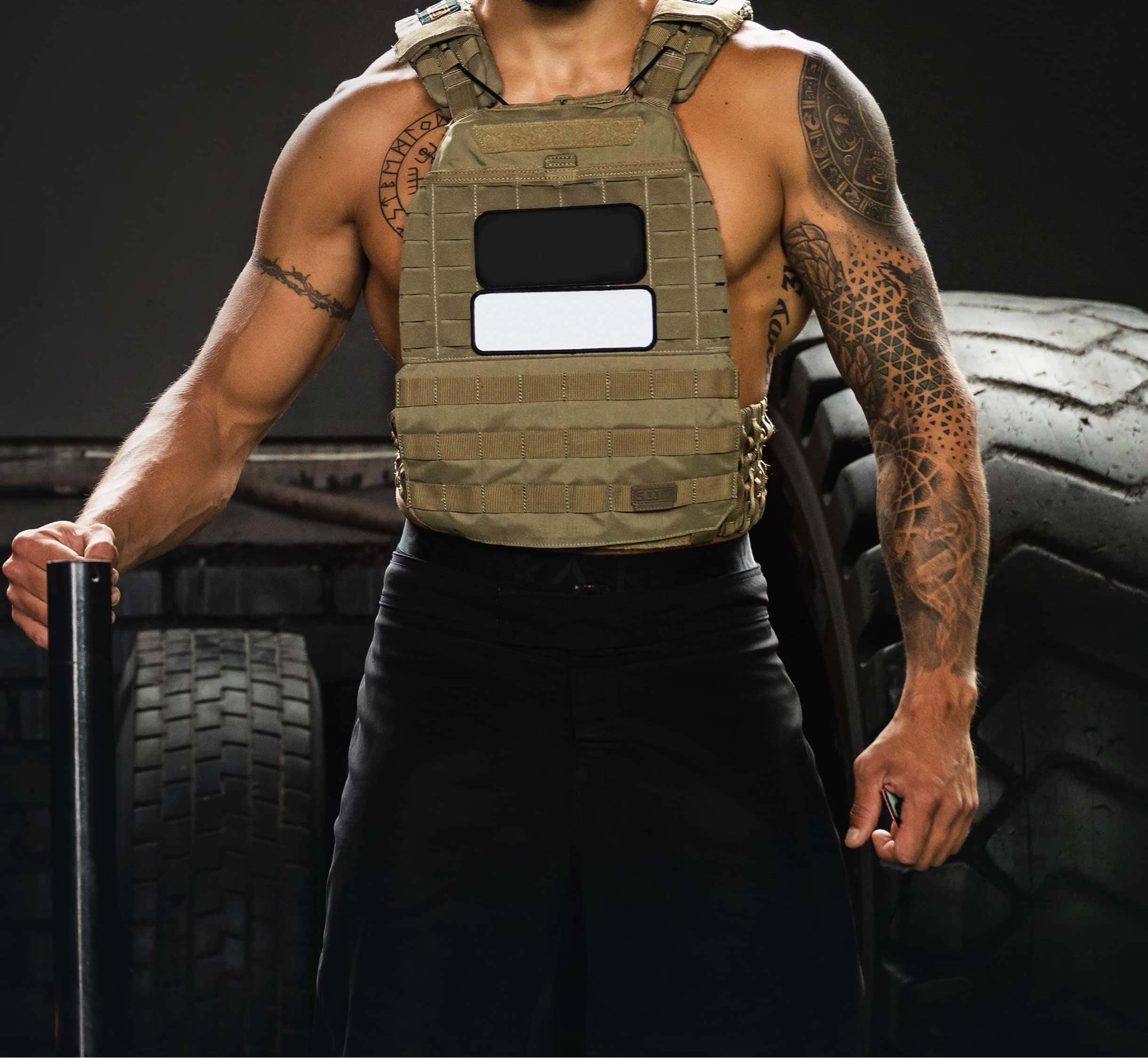
The weighted vest is my go-to for progressive overload in minimal equipment workouts. After years of trying everything from resistance bands to traditional weights, I've found that a good weighted vest is unbeatable for advancing bodyweight exercises. Look for one that's adjustable and secure - you don't want it bouncing around during pull-ups like my first cheap vest did.
A weighted vest helps you bust through plateaus in your calisthenics journey. Now, there are different options to consider when buying one. Some vests are a set weight with sand in them. Others have adjustable weights that you can take out or put in more.
However, perhaps the best option is a vest that uses weight plates on the chest and back. kensuifitness.com is a great option if you are looking for a solid vest with good weight distribution.
6. Exercise Mat

For floor protection, a non-slip exercise mat is crucial. Growing up, I used to train on whatever surface was available. Now I know better. A yoga mat makes a world of difference for handstand practice and ground-based movements.
These are easy to find, and they are worth home workouts. This is also a must-have when doing ab exercises.
7. Hand Stand Blocks
Handstand blocks are crucial for any home gym setup: they're perfect for scaling exercises to your current level. Take pike push-ups, for instance. You can gradually build the strength needed for handstand push-ups by elevating your hands on blocks.
I remember struggling with regular push-ups years ago - using blocks to elevate my hands made the progression much smoother. Handstand Blocks increase your exercises' range of motion (similar to parallels) just enough to take your gains up a notch.
The cool part about this is you can use multiple items around the house for the same function. A stack of books can serve the same purpose (as long as they are stable). Or, my favorite, two short 2x4 boards. It is so cost-effective; all they need is a little sanding to look and feel great while serving the same function.
8. Liquid Chalk

Liquid chalk has been a game-changer for my grip strength. Liquid chalk keeps your home gym setup clean while providing excellent grip for those sweaty training sessions.
I went a long time without trying it, and If I could go back in time, I would tell myself to use it. It helped me in multiple areas of my workout routines that required grip strength. But one of the bonuses I noticed is that it really helped my form. By simply not having to worry about my grip slipping, I was able to focus on correct movements.
7. Ab Wheel

The ab wheel might look simple, but don't let that fool you. It's one of the most challenging tools for building serious core strength - something I came to appreciate after years of traditional sit-ups and crunches in our spare bedroom.
I have always loved the challenge of this in my home workouts. It gives you a good change up from your tradditional ab exercises
Final Thoughts
Through years of trial and error with exercise equipment, I've learned that quality matters more than quantity. This entire setup costs less than a year's gym membership but provides everything needed for a complete bodyweight training equipment collection. These eight items cover all your bases, from basic push-ups to advanced calisthenics movements.
Remember, while indoor exercise equipment might seem expensive upfront, consider it an investment. Each piece should last years with proper care - a lesson I learned the hard way after going through countless cheap alternatives in my early training days.
Pro tip from someone who started with a few dumbbells: gradually build your collection. Start with the basics (pull-up bar, p-bars, and mat) and add pieces as your skills progress. This approach helped me manage costs while ensuring I mastered the fundamentals before moving on to more advanced training tools.
The beauty of this particular combination of bodyweight fitness gear is its scalability - whether you're just starting out like I was with basic push-ups in your bedroom, or working on advanced moves, these tools grow with you. They're all the fitness equipment you need for a complete calisthenics practice.
Finally, this is what I've found to be most helpful. You have to decide what items you think are important for your fitness journey.

